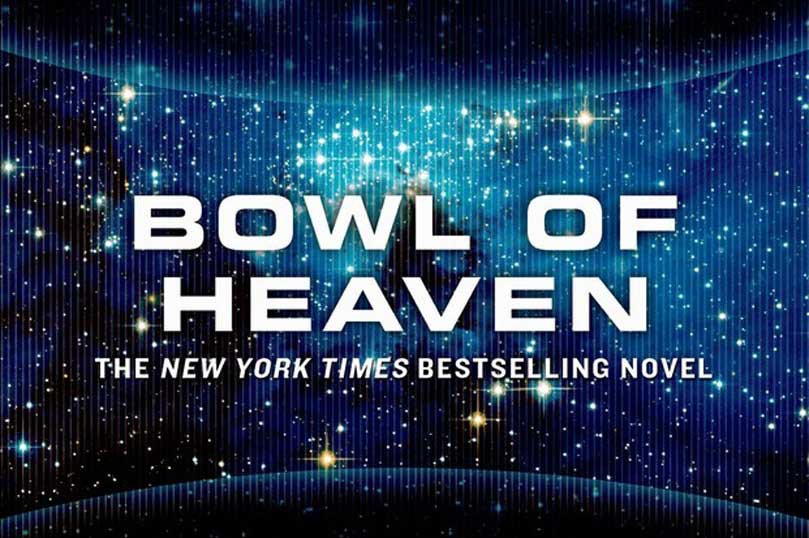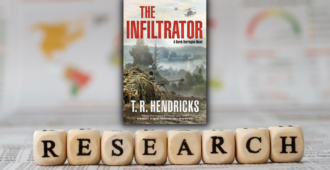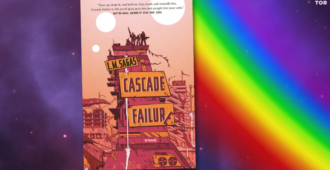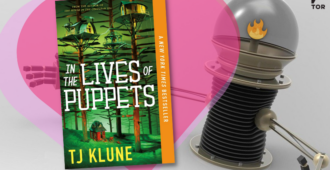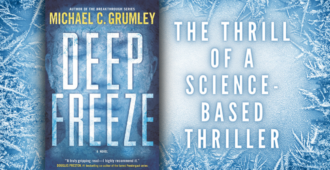Big Smart Objects
Written by Gregory Benford and Larry Niven
Gregory Benford’s take:
In science fiction, a Big Dumb Object is any immense mysterious object that generates an intense sense of wonder just by being there. They don’t have to be inert constructs, and perhaps the dumb aspect also expresses the sensation of being struck dumb by the scale of them. My favorite is the one I’m working on in a two-volume novel I’m writing with Larry Niven.
Larry said to me at a party, “Big dumb objects are so much easier. Collapsed civilizations are so much easier. Yeah, bring them up to speed.”
So we wrote Bowl of Heaven, first of two novels about a Big Smart Object. The Bowl has to be controlled, because it’s not neutrally stable. His Ringworld is a Big Dumb Object since it’s passively stable, as we are when we stand still. (Or the ringworld would be except for nudges that can make it fall into the sun. Those are fairly easy to catch in time. Larry put the stabilizers into the second Ringworld novel.)
A Smart Object is dynamically stable, as we are when we walk. We fall forward on one leg, then catch ourselves with the other. That takes a lot of fast signal processing and coordination. (We’re the only large animal without a tail that’s mastered this. Two legs are dangerous without a big brain.) There’ve been several Big Dumb Objects in sf, but as far as I know, no smart ones. Our Big Smart Object is larger than Ringworld and is going somewhere, using an entire star as its engine.
Our Bowl is a shell several hundred millions of miles across, held to a star by gravity and some electrodynamic forces. The star produces a long jet of hot gas, which is magnetically confined so well it spears through a hole at the crown of the cup-shaped shell. This jet propels the entire system forward — literally, a star turned into the engine of a “ship” that is the shell, the Bowl. On the shell’s inner face, a sprawling civilization dwells. The novel’s structure resembles Larry’s Ringworld, based on the physics I worked out.
The virtue of any Big Object, whether Dumb or Smart, is energy and space. The collected solar energy is immense, and the living space lies beyond comprehension except in numerical terms. But… this smart Bowl craft is also going somewhere, not just sitting around, waiting for visitors — and its builders live aboard.
Where are they going, and why? That’s the fun of smart objects – they don’t just awe, they intrigue.
My grandfather used to say, as we headed out into the Gulf of Mexico on a shrimping run, A boat is just looking for a place to sink.
So heading out to design a new, shiny Big Smart Object, I say, An artificial world is just looking for a seam to pop.
You’re living meters or maybe just a kilometer away from a high vacuum that’s moving fast, because of the spin. That makes it easy to launch ships, since they have the rotational velocity with respect to the Bowl or Ringworld… but that also means high seam-popping stresses have to be compensated. Living creatures on the sunny side will want to tinker, try new things…
“Y’know Fred, I think I can fix this plumbing problem with just a drill-through right here. Uh—oops!”
The vacuum can suck you right through… To live on a Big Smart Object, you’d better be pretty smart yourself.
Larry Niven’s take:
“The Enormous Big Thing” was my friend David Gerrold’s description of a plot line that flowered after the publication of Ringworld. Stories like Orbitsville and Rendezvous with Rama depend on the sense of wonder espoused by huge, ambitious endeavors. Ringworld wasn’t the first; there had been stories that built, and destroyed, whole universes. They had fallen out of favor.
And I wasn’t the first to notice that a fallen civilization is easier to describe than a working one. Your characters can sort through the artifacts without hindrance until they’ve built a picture of the whole vast structure. Conan the Barbarian, and countless barbarians to follow, found fallen civilizations everywhere. I took this route quite deliberately with Ringworld. I was young and untrained and I knew it.
A fully working civilization, doomed if they ever lose their grasp on their tools, is quite another thing. I wouldn’t have tried it alone. Jerry Pournelle and I have described working civilizations several times, in Footfall and Lucifer’s Hammer and The Burning City.
With Greg Benford I was willing to take a whack at a Dyson-level civilization.
Greg shaped the Bowl in its first design. It had a gaudy simplicity that grabbed me from the start. It was easy to work with: essentially a Ringworld with a lid, and a star for a motor. We got Don Davis involved in working some dynamite paintings.
Greg kept seeing implications. The Bowl’s history grew more and more elaborate. Ultimately I knew we’d need at least two volumes to cover everything we’d need to show.
Here’s the first, Bowl of Heaven. We’re hard at work wrapping up story lines on the sequel, Shipstar.
…………………………
From the Tor/Forge October newsletter. Sign up to receive our newsletter via email.
…………………………
More from the October Tor/Forge newsletter:
- The Secret World of Hardware Revocation by Cory Doctorow
- The Books in the Book by Tina Connolly
- The Ingredients of a Hero (Not the Sandwich) by Christopher L. Bennett
- Law School, Magic School by Max Gladstone
- Ghost Collection Sweepstakes

